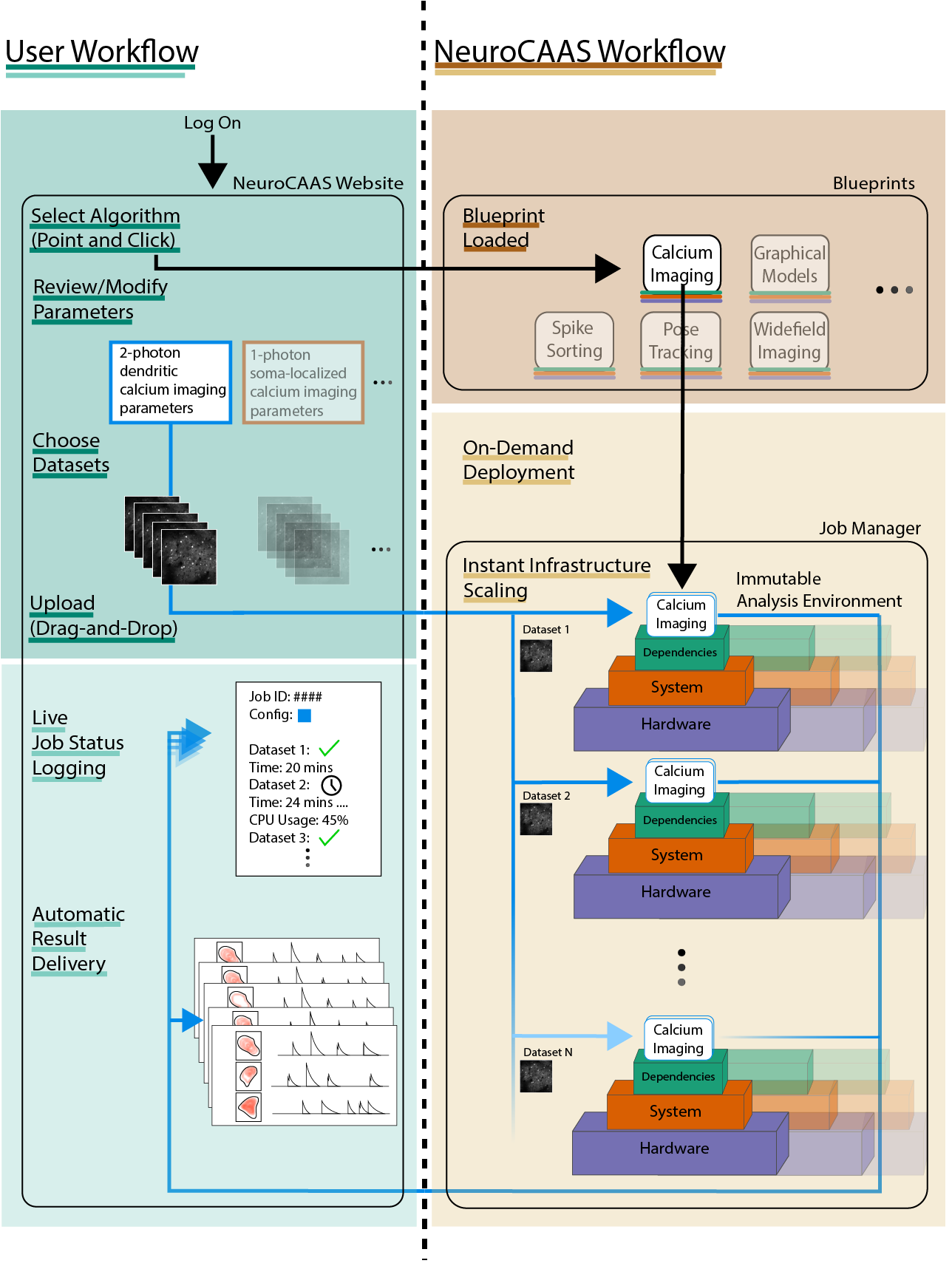Neuroscience Cloud Analysis As a Service
Neuroscience Cloud Analysis As a Service (NeuroCAAS) is a drag-and-drop data analysis platform for neuroscience. To get started, select one of our available analyses below, and analyze some demo data or bring your own. NeuroCAAS is committed to an open source model; contact us at neurocaas@gmail.com if you are interested in helping to develop or fund NeuroCAAS.
NeuroCAAS is an open-source scientific resource that uses cloud resources to run powerful modern data analyses. NeuroCAAS packages these analyses into fully portable descriptions called blueprints, which can then be deployed to analyze data on demand and automatically. Analyzing data with NeuroCAAS does not require any hardware purchases, installation, or dependency management. As a scientific user, you are responsible for only two things: 1) your data, and 2) a configuration file containing analysis parameters. You can find working demo datasets and configuration files in each of our available analyses. To learn more, check out our github repo and paper below.

-
Emergent Property Inference (Bittner et al. 2019) View Analysis
Emergent property inference (EPI) is a method for learning parameter distributions on models constrained to produce certain desirable phenomena in their output.
-
DeepLabCut (Mathis et al. 2018) View Analysis
Markerless pose estimation of user-defined features with deep learning for all animals, including humans.
-
CaImAn (Giovannucci et al. 2019) View Analysis
CaImAn is a python toolbox for large scale Calcium Imaging data Analysis and behavioral analysis.
-
LocaNMF (Saxena et al. 2020) View Analysis
Region-based Decomposition for Widefield Calcium Imaging Data.
-
Penalized Matrix Decomposition (Buchanan et al. 2018) View Analysis
Penalized Matrix Decomposition for Denoising and Compression of Functional Imaging Data.
-
YASS View Analysis
Yet Another Spike Sorter
-
RADICaL (Zhu et al. 2022) View Analysis
The Recurrent Autoencoder for Discovering Imaged Calcium Latents (RADICaL) is a method for inferring latent dynamics from single-trial 2-photon (2p) calcium imaging measurements.
-
Widefield LocaNMF View Analysis
Placeholder analysis to allow access to widefield analysis for federated users.